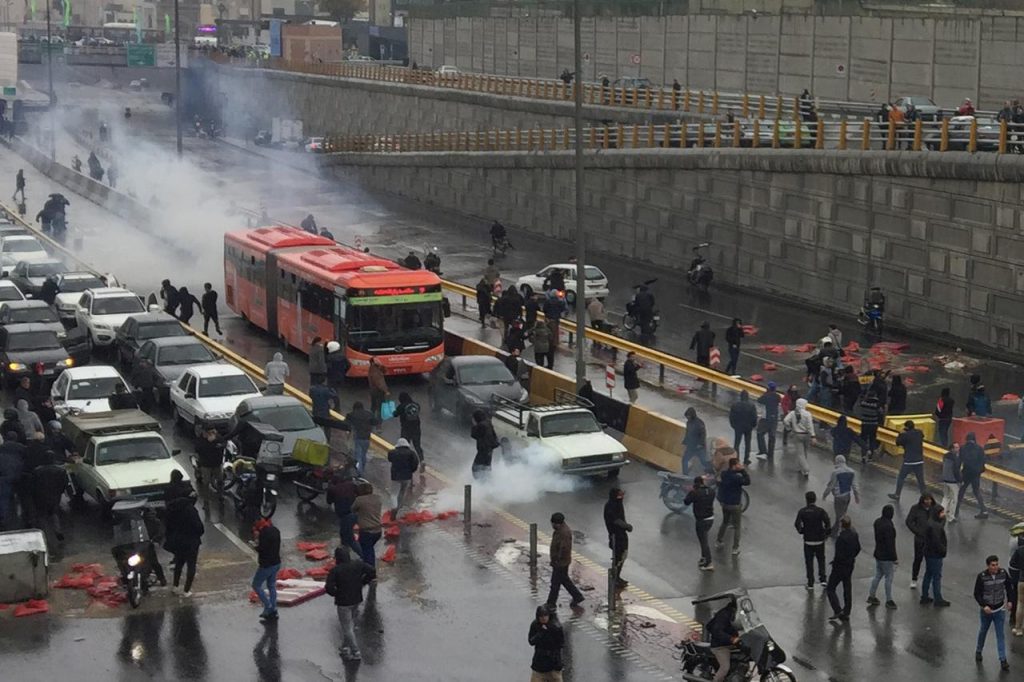
- ARAB NEWS
- 02 Jul 2025

In the final days of 2017, anti-regime protests broke out all over Iran. They were virtually unprecedented in terms of their geography, demography and speed. Now, in the last few days, more protests have overtaken the country, with equally jaw-dropping reach and speed.
The recurring protests could have profound implications not only for the people of Iran, but also for the entire Arabian Gulf region. Western governments should not risk being mere bystanders to the current demonstrations, as they were two years ago. More than 100 people have been reportedly killedin only four days, and protests have spread to more than 130 towns and cities.
The people of Iran are quite capable of confronting the regime’s suppressive forces on their own. The US and Europe do not need to intervene directly or attempt to actively shape the protest movement. However, Western governments should recognize they have a responsibility to level the playing field in areas that are out of reach for the opposition’s resistance units.
The protest movement is threatened by suppressive measures that are already dramatically escalating. By Monday, three days after the current unrest erupted, the Islamic Revolutionary Guard Corps (IRGC) was promising “decisive and revolutionary action” to suppress the protests.
At the same time, Iran was said to be in the midst of the largest internet shut down ever.
Straightforward repression is something that Iranian activists can be expected to push back against with extraordinary resilience. This was made clear during the previous nationwide uprising, when dozens of peaceful protesters were killed, either by IRGC gunfire or by torturous interrogations following their arrest. Yet the uprising continued for some time.
Unrest has effectively become the status quo in Iranian society, albeit to varying degrees. The Tehran regime is desperate to conceal this fact so it can go on projecting an image of strength. This is a significant part of the rationale for internet outages and the regime’s perennial censorship. It is also part of the reason why keeping the lines of communication open in Iran would go a long way toward weakening the regime.
The US and Europe have the tools to provide large segments of the Iranian population with reliable internet access. This would help them to go on organizing their demonstrations and countering the IRGC’s efforts to shut down all activism, while also allowing citizen journalists and the general public to reveal the true extent of the protests.
Tehran is now effectively admitting that the truth would be deeply embarrassing for the regime. Western powers should not underestimate how much they can accomplish by promoting this embarrassment. The more clearly Iran’s domestic population can see what is going on, the more inspired they will be to rise up against the theocratic dictatorship and directly challenge its repressive institutions. Considering how much they have already been willing to risk in pursuit of freedom, there is no telling how much more could be achieved once their successes are clear to everyone.
Open communication between the Iranian protesters and the international community would also help more people to recognize exactly what those protesters are fighting for. Both in 2017 and during the recent uprising, the regime’s Supreme Leader Ali Khamenei blamed “enemies,” particularly the Mojahedin-e Khalq, acknowledging that the oppositional group plays a leading role in planning the protests and popularizing anti-regime slogans.
Maryam Rajavi, the president-elect of the main oppositional group, the National Council of Resistance of Iran (NCRI), previously urged pro-democracy activists to turn 2018 into a “year full of uprisings.” The public continued protesting against the regime in spite of the lingering threat of violence and jail time. Some believe that the 2018 uprising was a popular endorsement of the opposition’s platform, which calls for establishing a democratic system of government in the wake of the current regime’s overthrow. The NCRI’s 10-point plan for the country’s future also calls for separating religion from the state and establishing equal rights for women and minorities.
Keeping the lines of communication open in Iran would go a long way toward weakening the regime.
Dr. Majid Rafizadeh
The current demonstrations have given rise to some slogans that advocate regime change, including the chant of “death to the dictator.” It is vitally important that this is heard by as many Iranians as possible — and by the entire international community. Then everyone will be able to see that the Iranian people and opposition groups are closer than ever to achieving their democratic aspirations.
The US and Europe can help to make this happen by replacing the communications resources that protesters have lost. If they decline this responsibility, they will be doing so at a time when the mullahs’ hold on power is as tenuous as ever.
It may take only the smallest of investments from the international community to save hundreds of thousands of lives. And the world stands to gain a great deal from such a move.